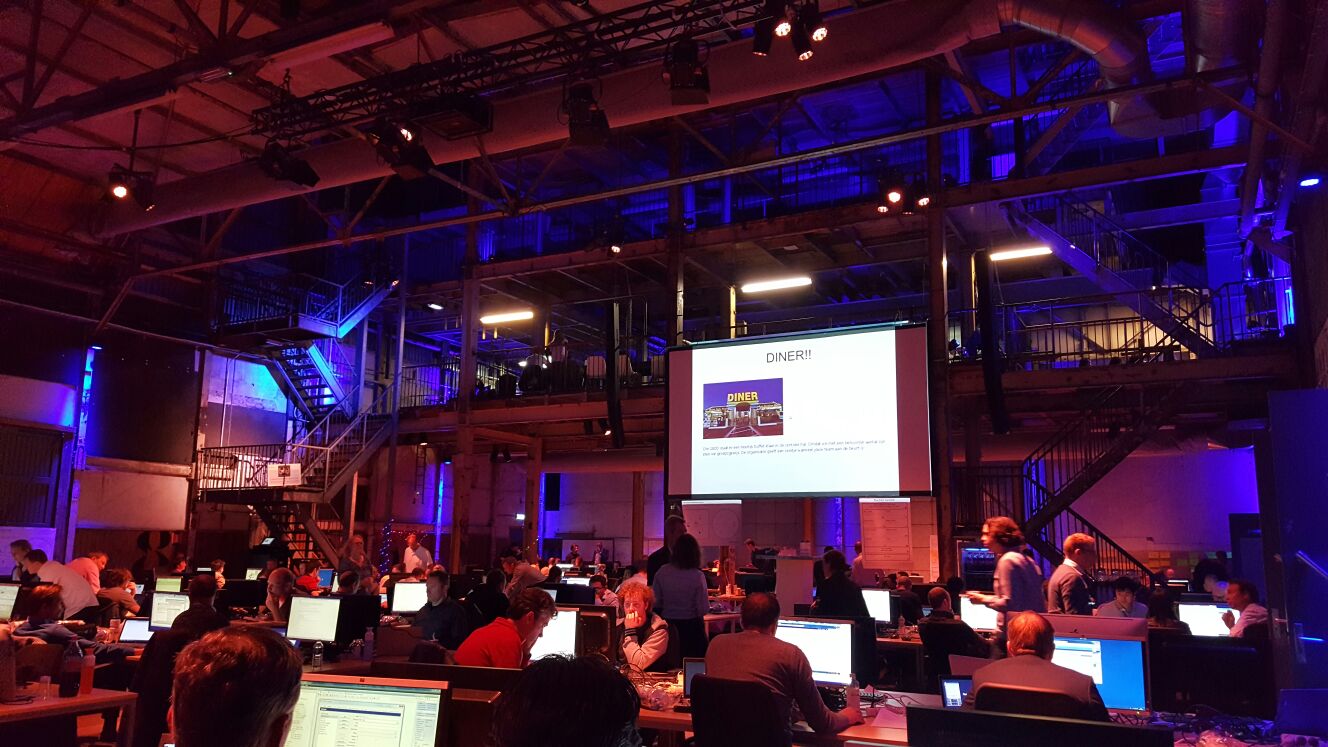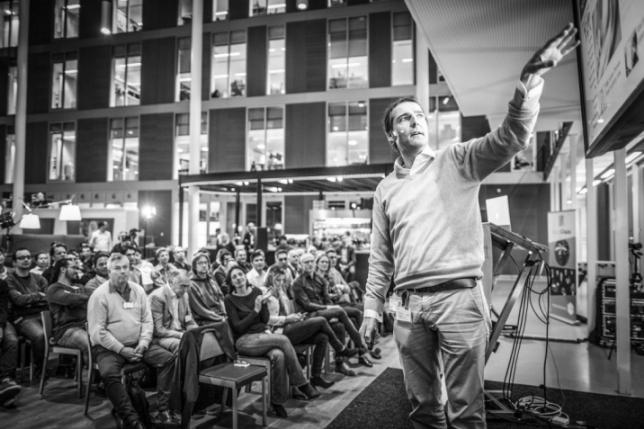 Blog 07/03
Blog 07/03 If you think organising a solid hackathon requires nothing more than putting on a geeky t-shirt and checking your Internet connection, think again! To organise a successful hackathon, you will need to utilise all of your planning skills and stay awake all night long (most hackathons last for 24 hours without breaks).
Major League Hacking defines hackathons as ‘invention marathons’. They offer a hospitable environment for people who want to create, innovate, and share ideas. As Joshua Tauberer says, ‘hackathon’ is a very broad concept. First and foremost, hackathons are a place for problems to be solved in a creative manner. On top of that, they are events where people come together to solve a wide range of problems, which are not always related to technology either.
Dave Fontenot, member of the online Hackathons Anonymous group: “These kinds of events are very addictive, despite the lack of sleep, and the solid hackathon community is growing faster than ever.” The usual focus of a hackathon is on programming, but hackathons are becoming more and more popular across the board. Ranging from civil engineering to sustainable food sources, solid hackathon participants try to find new solutions for all sorts of issues. In short, even if you are not into programming or IT-related matters, a hackathon might still be a good way for you to expand on your existing event planning portfolio and do something a little different!

To help you with that, here are some steps for organising a solid hackathon even if you have no prior experience with them.
The interesting thing about hackathons is that the people are required to form teams and find solutions in a competitive setting. This results in more pressure, but also in more adrenaline.
However, if you, as the event planner, are creating the teams, that means it is your responsibility to appoint project leaders or team leaders. You have to be very careful in picking your leaders, as the entire group dynamic will depend on those select few people. Joshua Tauberer suggests the following: “Have a look at the guest list, and then once you have found a few people who are bringing certain projects, decide on the project leaders.” Joshua also recommends meeting up with the leaders before the event to discuss the details.
Even though the team leaders might be aware of the details of the event, it is still important for you to kick off the event with a proper welcoming session to go over the programme, the rules, and the logistics. Tauberer: ‘In a smaller gathering (up to about 30 people), you can have all of the participants introduce themselves.’ The objective of the welcoming session is to explain anything that is unclear and establish a friendly vibe for the rest of the day (and night!).
Imagine it, a large (or smaller) group of people working around the clock to finish a project in 24 hours and ‘beat’ their competition. The last thing they want is to be distracted from their purpose of solving the issue and designing a winning solution.
As the event planner, it will be your task to ensure that the participants have a comfortable environment to work in that includes everything they could possibly need. First things first, make sure the room is hospitable. Is there plenty of light? Is the space (especially the tables and chairs) comfortable enough to spend many hours in? Do the participants have all of the materials they will need?
Secondly, make sure to provide plenty of food and drinks. The hackathon participants will most likely not have time to break for lunch, and will instead want to eat while they work. Therefore, make sure they have enough to eat, including vegetarian and vegan options. And don’t forget about beverages; apart from water and soft drinks, make sure there is plenty of coffee to help people stay awake at night.
Finally, it is important for your Wi-Fi to be strong enough (this might seem obvious, but it is absolutely essential).
You yourself might not always be available, so assign a contact to handle the participants’ needs. This person must be familiar with every aspect of the solid hackathon’s logistics, be able to propose alternative solutions, and have full control of the situation.
This is where the teams get to present their results and explain their solutions. According to Joshua Tauberer, if the groups are larger, it is a good idea for everyone on the team to be involved in presenting the projects, not just one of two people. ‘If possible, have them present using a digital projector. But make sure to keep up the pace. Your participants will have plenty to say about their projects by this time, so limit each team’s window for presenting to 1-2 minutes, and make sure that if they want to use the projector, they get their materials ready to go before the wrap-up session begins.’

A solid conclusion requires an energetic dynamic (taking into account the fact that your participants will be rather tired after having been up all night) and speedy presentation of the various findings and solutions. And don’t forget to organise an award ceremony, presenting and rewarding the winning team (this usually falls within the purview of a professional jury that attends the wrap-up session).
Planning and running a solid hackathon is far from easy, but it is also a lot of fun! First of all, hackathons are events with a specific purpose, ending with the presentation of concrete findings or solutions to a specific problem. Moreover, the success of a hackathon depends on rigid criteria, such as appointing project leaders, offering the participants a pleasant working environment, running a proper welcoming session that will explain everything, appointing someone to be responsible for the hackathon space, and developing a solid conclusion. If you take into account all of these aspects, you will be ready to put on a geeky t-shirt and plan your first solid hackathon!
Source: Eventplanner.nl article
Learn more: DeFabrique article